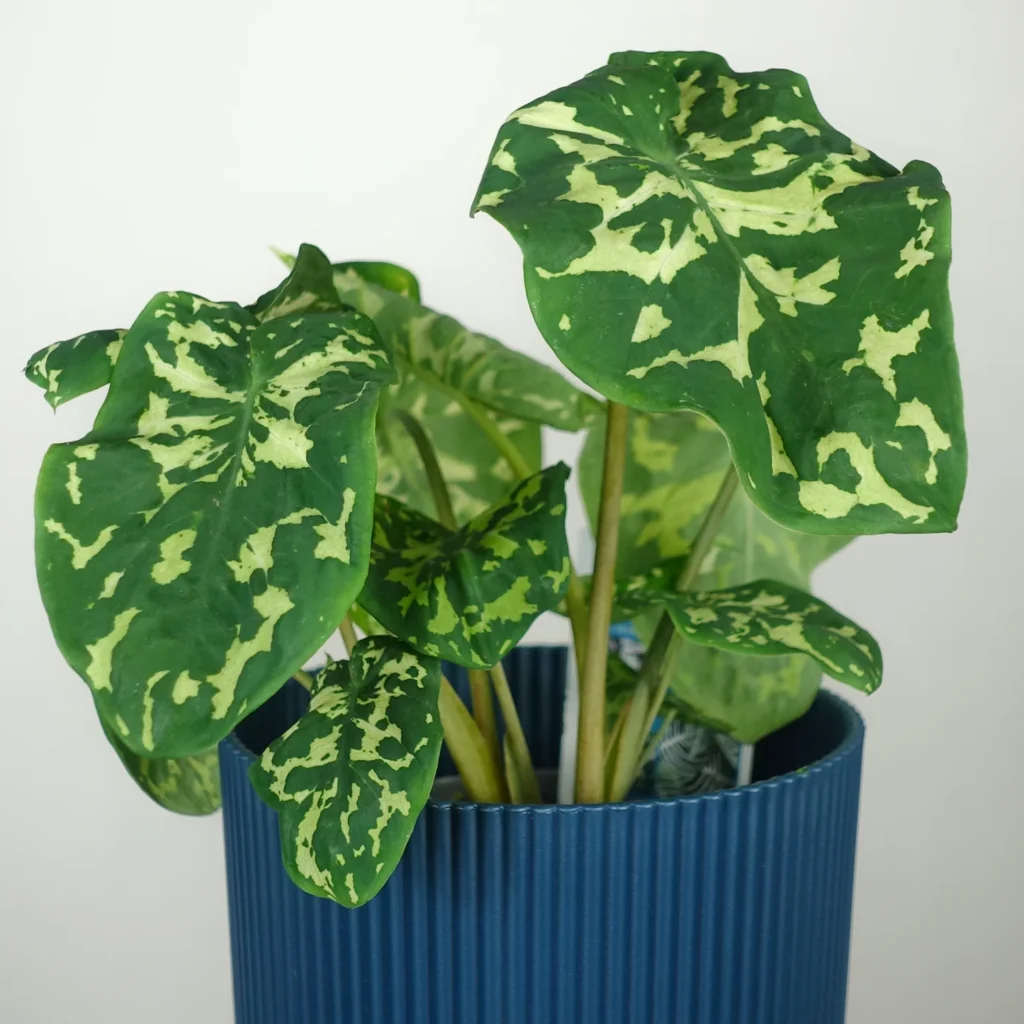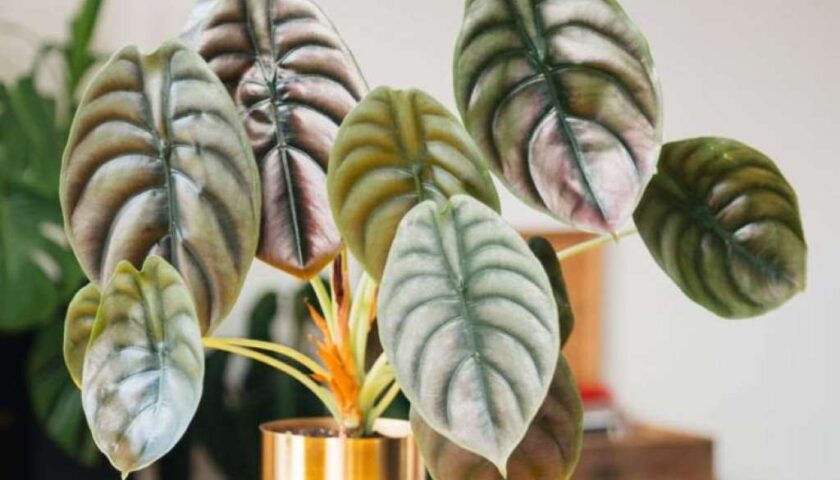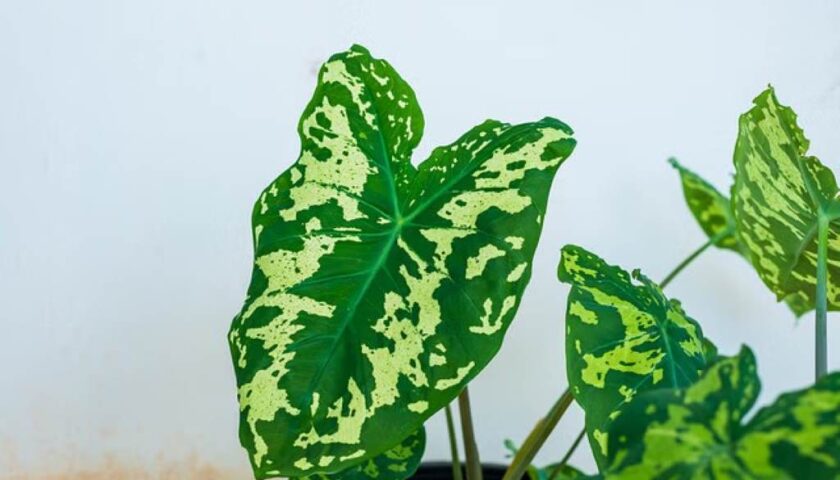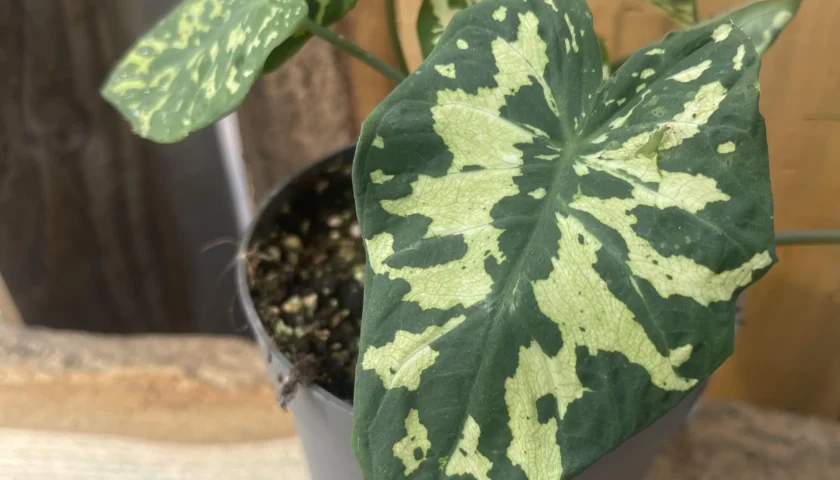Alocasia Hilo Beauty, with its stunning heart-shaped leaves and captivating patterns, is a true showstopper in the houseplant world. But like any tropical beauty, it comes with some specific care requirements. One of the most crucial aspects is getting the watering right. Too much or too little water can lead to problems for this striking plant.
In this article, we’ll dive into the perfect watering practices for your Alocasia Hilo Beauty. We’ll cover:
- Why Proper Watering Matters
- Signs of Overwatering and Underwatering
- The Ideal Watering Technique
- Factors that Influence Watering Frequency
- Tips for Maintaining Optimal Moisture
Understanding the Importance of Watering
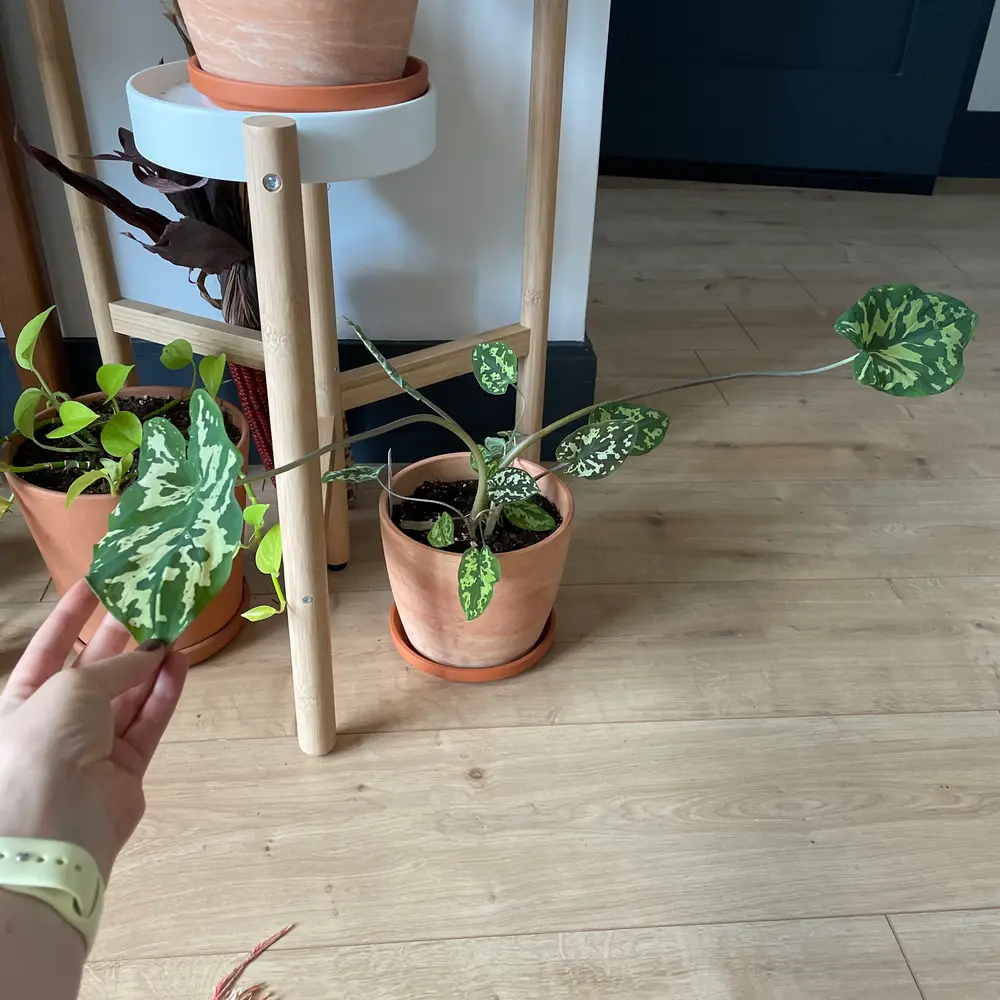
The right amount of water is essential for your Alocasia Hilo Beauty for several reasons:
- Nutrient Transport: Water acts as a highway, transporting vital nutrients from the soil throughout the plant.
- Photosynthesis: Water is a critical component of photosynthesis, the process plants use to create energy.
- Structural Support: Water maintains turgor pressure, keeping plant cells plump and providing structural support.
Signs of Watering Troubles
It’s important to be able to identify the signs of overwatering and underwatering, so you can take corrective action to keep your Hilo Beauty thriving:
Overwatering:
- Yellowing and drooping leaves
- Soft, mushy stems
- Foul odor from the soil (root rot)
- Leaf edema (water-soaked blisters on leaves)
Underwatering:
- Dry, crispy leaf edges and tips
- Wilting and drooping
- Slow or stunted growth
- Leaves curling inwards
Read Also: What is Alocasia Hilo Beauty? A Guide to this Unique Elephant Ear
The Goldilocks Zone: Watering Just Right
The key to Alocasia Hilo Beauty watering is striking the perfect balance – keeping the soil consistently moist, but not soggy. Here’s the recommended technique:
- The Finger Test: Stick your finger about 2 inches deep into the soil. If the top 2 inches feel dry, it’s time to water.
- Water Thoroughly: Water slowly and evenly until you see excess water draining from the pot’s drainage holes. This ensures the water reaches all roots.
- Discard Excess Water: Empty the drainage saucer promptly to prevent root rot.
Factors Affecting Watering Frequency
The “water once a week” rule doesn’t always apply! How often you water will depend on several factors:
- Season: In warmer, brighter seasons, you’ll likely need to water more often than in cooler, darker months.
- Pot Size: Smaller pots dry out faster than larger ones.
- Soil Type: Well-draining soil will need watering more frequently than moisture-retaining mixes.
- Humidity: High humidity slows soil evaporation, reducing watering needs.
- Plant Activity: During active growth periods, your Hilo Beauty will demand more water.
Troubleshooting and Extra Tips
- Bottom Watering Option: Consider bottom watering, where the pot sits in a basin of water for a while, allowing the soil to absorb moisture from the bottom up. This promotes strong root growth.
- Consider a Moisture Meter: If you’re unsure about soil moisture, use a moisture meter for an accurate reading.
- Drainage is Key: Ensure your pot has adequate drainage holes to prevent water from stagnating.
- Increase Humidity: Alocasia Hilo Beauty enjoys a humid environment. Use a humidifier or a pebble tray to boost moisture levels.
A Note on Dormancy
Alocasia Hilo Beauty, like some other Alocasia species, may experience a brief dormancy period in cooler months. During this time, reduce watering significantly, only watering when the soil has dried out several inches deep.
Final Thoughts
Watering your Alocasia Hilo Beauty might seem tricky at first, but with practice and observation, you’ll find the perfect rhythm. Remember, a little attentiveness to its watering needs will pay off with lush, vibrant foliage and a healthy, happy plant.

